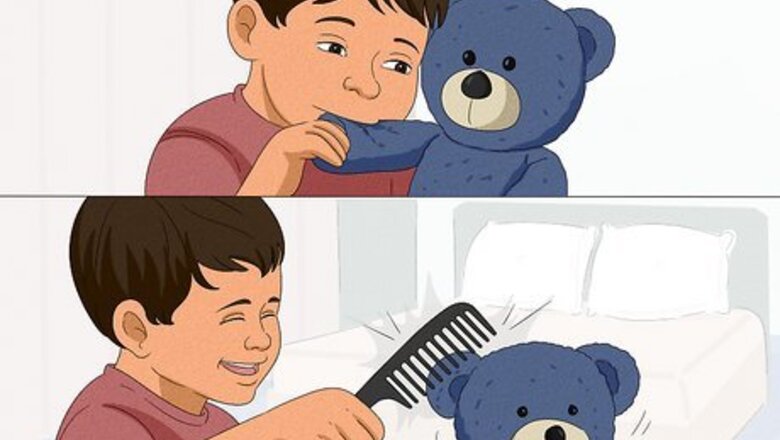
views
Understanding Why Your Child Hits
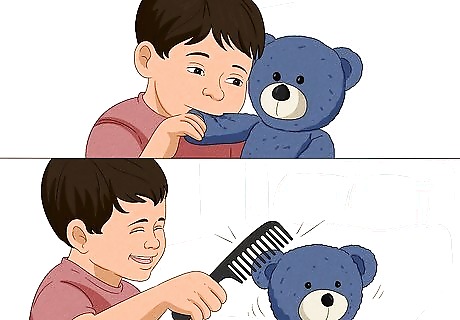
Consider normal child development. Babies naturally explore the world through biting and hitting things around them. Hands and teeth are a child's first social tools. A child learns to use them to explore the things around them as well as the reactions she gets from others when she uses them. Biting and hitting is most common between the ages of 18 months and 2 1/2 years, while language is still developing. Biting usually stops as language develops, but hitting often continues for several years into early childhood.
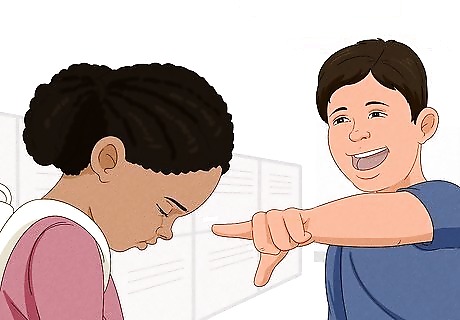
Learn what causes your child to hit. If your child is hitting in particular environments, such as at a particular child's house or at preschool, take a look at these places to see what might be causing her behavior. Consider the behavior as a nonverbal communication, and think about what she might be trying to communicate. Most children have shorter tempers when tired. Consider whether the hitting is happening at a particular time of day or in a limited number of situations. Consider the possibility that your child is responding to unkind behavior. Teasing and bullying often occur very subtly, in ways that your child may not be able to communicate. If this is the situation, you'll need to address those behaviors even as you teach your child alternatives to hitting.
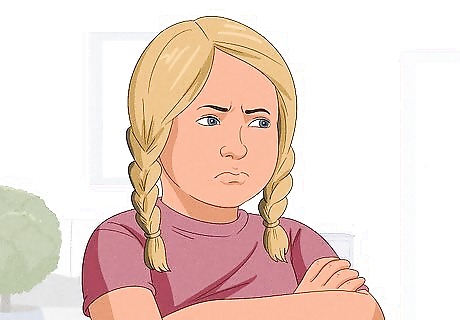
Remember that being angry is okay. Teaching your child to identify her feelings is important. Anger, frustration, and jealousy are feelings, and feelings are natural and normal. Never make your child feel ashamed of having a feeling, even though you are trying to teach her alternative behaviors. Notice how you respond to your own feelings of anger. Use these moments to help teach your child alternatives to hitting. For example, if you get angry at someone, use your hand like a puppet. "Okay, hand, you feel angry, but no hitting, okay?" It might feel silly, but your child will get the message. Using words to identify your feelings will help your child better connect words to his own feelings. Saying out loud when you're feeling upset, angry or frustrated can help your child learn that these feelings are normal and okay. Follow up by stating what you're going to do to help yourself feel better. For example, you might say, "I feel angry, but I'll feel better if I take 5 big breaths."
Providing Alternatives to Hitting
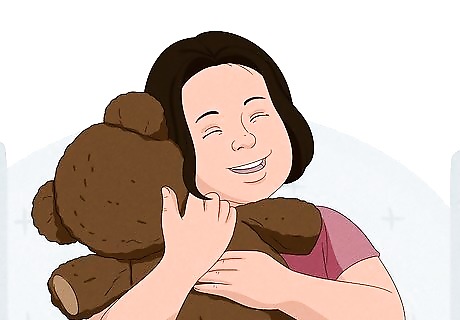
Model non-aggressive behavior. Using non-aggressive behaviors to work through difficult situations is an important educational tool for children. If you see your child hitting toys, dolls or stuffed animals, you can redirect the child to act gently. Model non-aggressive behavior by teaching the child to "pat the baby" or "hug the puppy." If your child sees other people hitting each other, whether older children or adults, she is more likely to think of hitting as acceptable. If you want to teach her that hitting is not acceptable, you must make sure that no one in your family is hitting each other at any time, for any reason. Grabbing is an aggressive behavior with younger children, and often leads to hitting. If a child grabs an item from another, redirect by modeling other ways of communication.
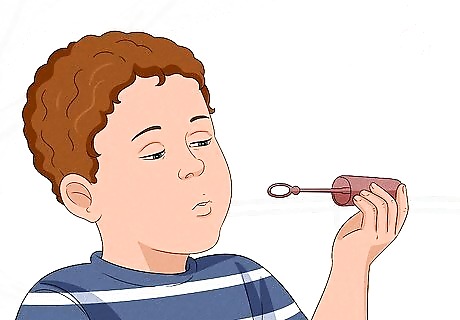
Role-play alternative responses. When your child isn't upset, role-play possible responses to feeling angry. Blowing bubbles will help your child practice taking deep breaths. A red stop sign might help your child remember to stop and think of alternatives before hitting. Provide a safe space where your child can go to calm down. There are educational children's books showing alternatives to aggressive behaviors that you and your child can read together. For example, Hands Are Not for Hitting by Martine Agassi is a book on this topic using simple words and pictures. Practice having the child ask for a break or a physical activity that removes him from the area when he wants to hit another child. For example, if he needs more physical activity, he might take a break and run around a fenced-in area (such as the backyard or school playground) to release his excess energy, rather than hit another child.
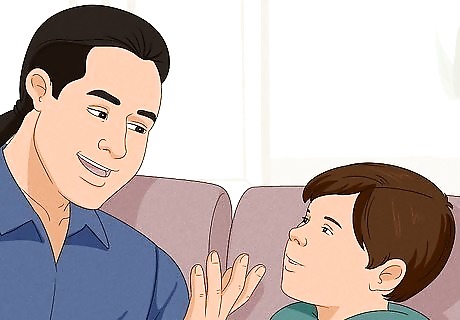
Develop a plan for what to do. Involve your child in making a plan for what to do instead of hit another child. There should be a phrase that you and your child agree upon that marks the beginning of the plan, such as "Remember, no hitting" or "That's enough. Let's go." This phrase is not meant to embarrass your child, but to remind him of the plan. Don't use a lot of words when your child is upset. Make sure you remain calm as you initiate the plan. This isn't a time for punishment, but for education. Stick to the plan. This will reinforce your child's trust and help him feel more safe.
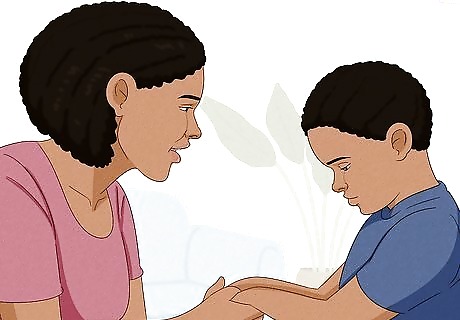
Use observation words. Don't try to reason with your child when he's upset. Instead, stick to simple observations. "You seem upset" or "You seem angry." This will help him learn to connect these words with the feelings he's having. If he denies feeling this way, don't argue. Just wait for him to calm down, making sure he's safe. Remember that you are your child's external emotional regulatory system while he's still developing his own internal emotional regulation. Stay calm in your voice and your body. Don't try to make him feel guilty for his feelings. Praise him for being able to refrain from hitting.

Set your child up for success. If your child is more likely to hit when she's in crowded noisy places, try to avoid these places if at all possible. If she has a hard time attending birthday parties, consider attending for only a short time, with careful supervision. Give your child coping tools for being in difficult situations. Having a calming toy to fidget with, breathing exercises for calming down, and identifying safe spaces are all ways to help a child feel calmer. Practice these coping tools ahead of time and make sure they're accessible to the child. After all, a fidget toy in a backpack won't help much. Find toys that will fit into the child's pocket, or jewelry that's designed especially for chewing.
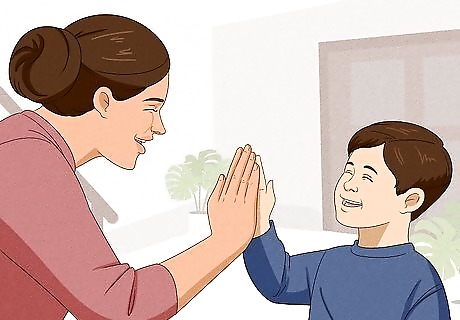
Prepare your child for a situation ahead of time. Talk through what the child can expect - who will be there, what activities they'll be likely to do. Then talk about what to do if the child feels like becoming aggressive. Make a clear plan, and then stick to it. Consider providing a positive consequence for not hitting in a high-stress situation. For instance, if birthday parties are difficult, consider providing a favorite small toy if the child successfully attends the party without hitting. Teach good touch. Giving "high-5"s is a good way to touch other children or adults. Practice these ahead of time.

Don't give in to demands. If your child learns that they can get their way by hitting others, they'll be more likely to continue to do this. To teach your child not to hit, the best response you can offer will be firm refusal to meet his demands after hitting. If he has hit another child because he wants a toy, for instance, do not give him the toy. Use empathetic words to share in their sadness over not having the toy. Feeling sad is okay, and understandable. Don't use cruel or angry words if your child continues their demands. Don't cave in, but don't respond in anger either. Remember that their anger will pass. Maintaining your boundaries provides safety and comfort for your child in the long run. If you give your child what he wants, regardless of their behavior, you're not providing them with the parental security that helps them feel safe.



















Comments
0 comment